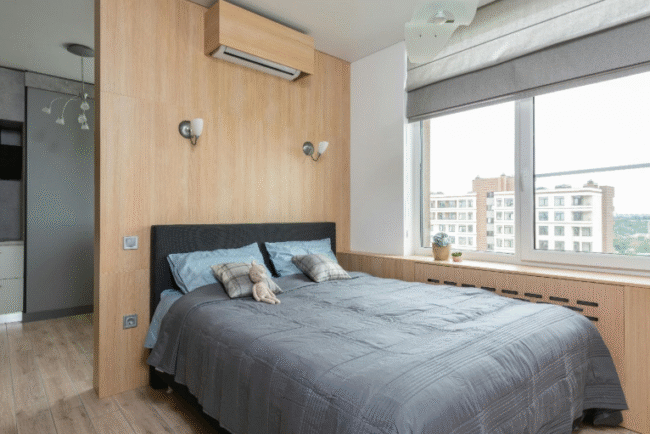
Getting a new cooling system might not be the most exciting task on your to-do list, but it’s definitely one of the most important when summer heat kicks in. The right setup can keep your home comfortable, lower energy bills, and last years. But here’s the catch: if you don’t plan ahead, you could spend more than you should—or worse, pick a system that doesn’t suit your space.
That’s why it helps to go in with a game plan. Whether you’re upgrading an old system or installing one for the first time, a few smart decisions now can save you time, stress, and money later. In this article, we’re breaking down a few things to think about before making the call. It’s all about choosing what works for your home, not just what sounds good in theory.
Evaluate Your Home’s Size and Layout
Not every home is built the same, and that matters when picking a cooling system. A one-bedroom condo won’t need the same setup as a two-story family house. Think about square footage, ceiling height, how many rooms you have, and which ones get the most sunlight. Even the way air moves through your space makes a difference. Choosing the right size system helps avoid issues like uneven cooling or energy waste.
Compare System Types
When you’re looking into home cooling, you’ll probably hear about two main options. One uses ducts that move air through vents in each room. The other works with wall-mounted units that don’t require ducts at all. Each has its strengths depending on your home’s layout, age, and your personal comfort needs. If you’re deciding between these systems, doing an in-depth comparison of split unit vs central air is a great starting point. When you know the pros, cons, and use cases of both setups, you can choose the one that makes the most sense for your situation.
Think About Installation Costs and Labor
The system itself is just one part of the total cost. Installation plays a big role, too. Some homes may need ductwork repairs or new lines installed. Others may only need simple wiring and mounting. Labor costs can also vary based on how complex the job is and how accessible the space is. Ask for quotes from trusted pros before you start, so you know what to expect and can avoid surprises.
Energy Efficiency Ratings Matter
Cooling your home can take up a lot of energy, especially during warmer months. That’s why looking at the energy efficiency rating of any system you’re considering is worth your time. SEER ratings (Seasonal Energy Efficiency Ratio) tell you how well a unit performs. A higher SEER usually means better efficiency, which could save you money on energy bills year after year.
Consider Long-Term Operating Costs
While focusing on the upfront price tag is tempting, it’s smart to look at the bigger picture. A cheaper system might cost more in maintenance or repairs down the line. Think about parts, servicing needs, and how often you’ll need tune-ups. Choosing a reliable brand with good reviews and warranties can help reduce future costs and headaches.
Know Your Climate and Cooling Demands
Your local climate plays a big part in your cooling system’s performance. If you live somewhere hot and humid, you’ll need something that can handle heavy use for most of the year. On the other hand, homes in cooler areas might only need light cooling during warmer months. Think about your location and how often you’ll actually use the system. A setup that’s great for California might not be the best fit for a home in the Midwest.
Factor in Ductwork Conditions or Lack Thereof
If your home already has ductwork, checking its condition before installing a new system is important. Old or leaky ducts can reduce efficiency and increase costs. In some cases, repairing or replacing them can be just as important as installing the cooling unit itself. On the flip side, going with a ductless option might be simpler and faster if your home doesn’t have ducts. It can also save money on installation and avoid the mess of major remodeling.
Don’t Overlook Indoor Air Quality Features
Cooling systems today do more than just control temperature—they can also help improve air quality. Some systems come with built-in filters or options for air purification and humidity control. These features are especially helpful if you have allergies, pets, or anyone in the home with breathing issues. Even if you don’t think about air quality often, having cleaner air can make your home feel fresher and healthier overall.
Think Ahead: Smart Thermostats and Controls
Modern systems often pair with smart thermostats that let you control your cooling with your phone. This gives you more control over how and when you use your system, which can lead to lower energy bills. Features like scheduling, voice control, and remote access add convenience too. It’s worth checking whether your system supports smart features if you’re upgrading. They’re not just cool tech—they can help you cool your space more efficiently.
Work With Licensed HVAC Professionals
Even the best system won’t work well if it’s installed poorly. That’s why working with trained, licensed professionals is so important. A good installer will make sure your system is set up correctly, runs efficiently, and meets safety standards. They can also help you choose the right system based on your home’s specific needs. Don’t be afraid to ask questions, read reviews, or request credentials. It’s your home—make sure the work is done right.
Choosing a new cooling system isn’t just about comfort but long-term savings, reliability, and peace of mind. By thinking through these ten points, you’ll be better prepared to pick a setup that fits your home, lifestyle, and budget. There’s no perfect option for everyone, but there is a perfect option for you. Take your time, ask the right questions, and you’ll be on your way to a cooler, smarter home in no time.
